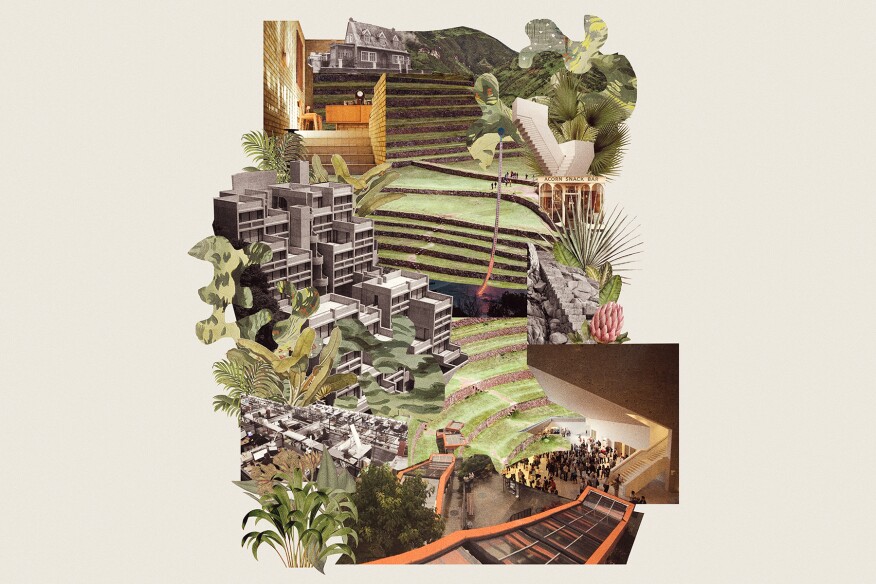
The Mexico City–based Tatiana Bilbao Estudio is venturing into South America for the first time with Botániqo, a palmy "sustainable urbanism" residential oasis outside Quito, Ecuador. Botániqo will feature a modular nine-tower residential complex home to 277 apartments set within 3 acres of communal gardens and green spaces in the rapidly growing satellite city of Cumbayá.
Tatiana Bilbao, the firm's namesake founder, is partnering with Uribe Schwarzkopf, a large architecture and building firm in Ecuador, on the project. To date, her firm's projects have spanned Mexico, Guatemala, the U.S., and Europe.
“When we were approached to do a project in Ecuador, we never hesitated. First, Ecuador is a very important country in South America, not far from Mexico,” Bilbao tells ARCHITECT. “We wanted to connect with our ‘neighbors to the South,’ with part of our culture, and with our shared history. Also we knew that working with Uribe Schwarzkopf was an opportunity to make things different and with quality.”

As can be seen in Bilbao’s lush peach-and-green collages—her preferred practice in place of renderings—as well as in the concepts by Uribe Schwarzkopf, the vision for Botániqo is human and community-centered, featuring nine unique modular residential towers that connect to one another via terraced gardens and leafy gathering spots and walkways, as well as a green pedestrian boulevard that feeds into the Chaquiñan route, a popular cycling path that connects Cumbayá with other Quito suburbs.

In a public–private partnership, the project will also create a new public transportation hub on an additional acre of land, which will serve 60,000 people commuting into Quito daily. In a press release, Uribe Schwarzkopf general manager Joseph Schwarzkopf said that partnering with Bilbao helped “advance our approach to sustainable urbanism.”

Key to that sustainability is prioritizing green space, as the name Botániqo implies. About 35% of the site’s footprint will be occupied by buildings. And, according to a press release, “each tree in the terrain will be preserved and transplanted through a careful adaptation process, and then relocated within the project, maintaining the endemic vegetation of the area.” The firms also say that half of the project’s materials will be sourced locally. The tower exteriors will feature living façades, cultivated with flora and fauna native to the high-altitude (at 9,350 feet, Quito is the second-highest capital in the world) equatorial city.

“We are happy to work in the place where climate conditions are those that everyone in the whole world wants to emulate. Having this as a natural condition makes things easier, although I think that we should go back to let our bodies adapt to the conditions of each place. In this place this is a given,” Bilbao tells ARCHITECT. “The ecosystems in Quito are so present and revealing themselves that for us connecting to them is more important.”
Uribe Schwarzkopf expects Botániqo to be completed in the third quarter of 2024.















